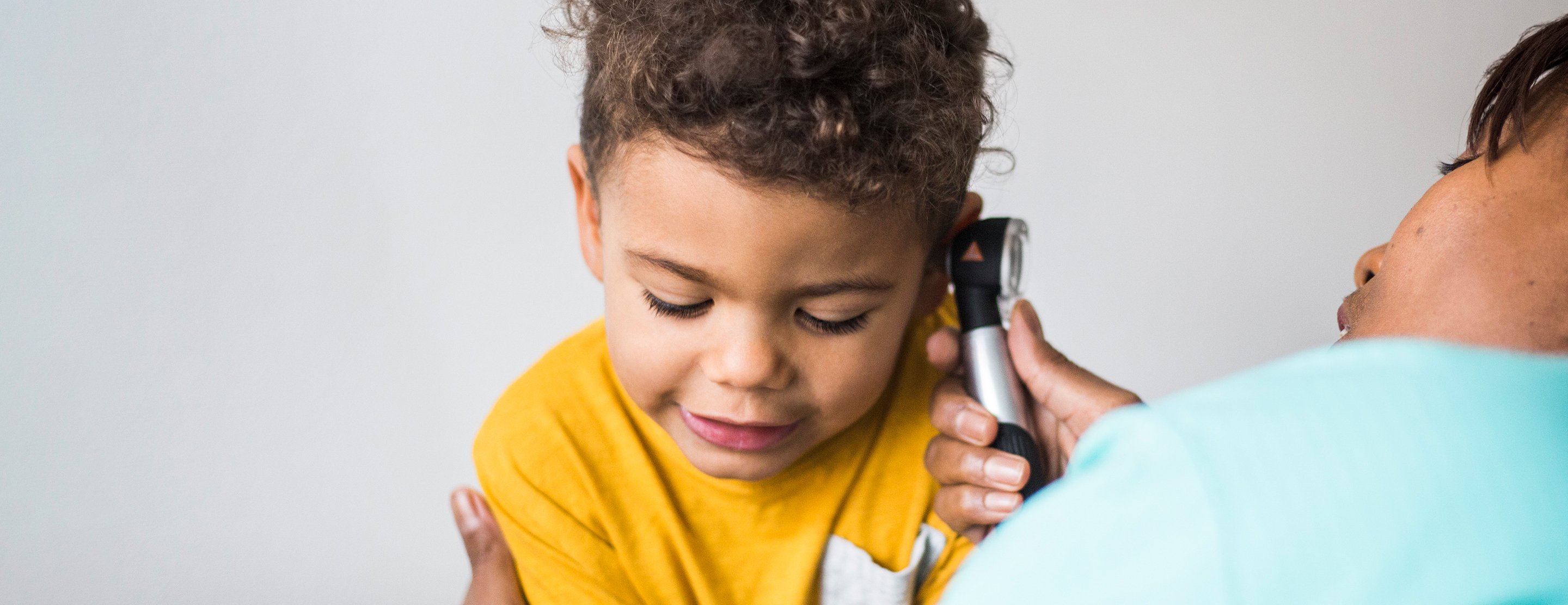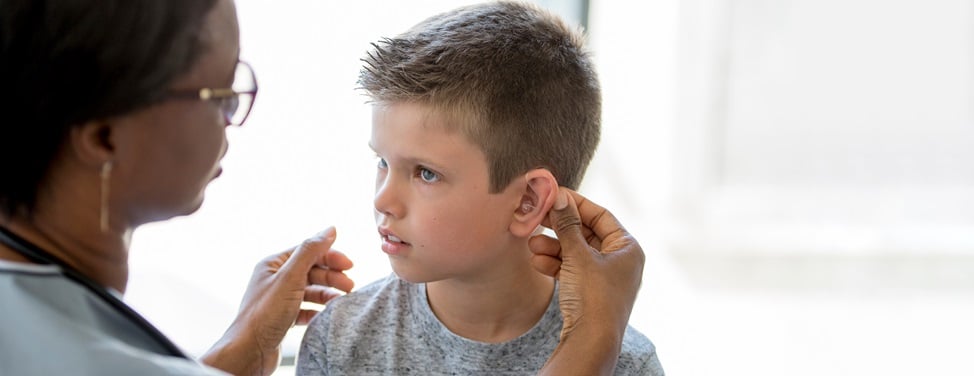UCSF audiologists collaborate with specialists from many different fields to evaluate children. The professionals we work with may include:
- Pediatricians
- Otolaryngologists, or ear, nose and throat specialists
- Speech pathologists
- Educators
- Behavioral specialists
- Occupational and physical therapists
- Ophthalmologists
And, most importantly, we work extensively with parents.
No child is too young for a hearing test. Infants are routinely screened for potential hearing loss after birth before they leave the hospital. The type of test used to assess a child's hearing status depends on the age and cognitive function of the child.
Hearing Tests for Infants
Infants are tested in two ways:
Behavioral Observation Assessment (BOA)
These tests are conducted by a specially trained audiologist who observes a child's body and head responses to sounds, including cessation of activity, body movement, eye widening, eye opening, or change in sucking rate.
Electrophysioglogic Tests
These tests help determine a child's hearing levels based on electrical information from the auditory nervous system. Usually waves are noted on a screen and compared to norms. They are used when behavioral tests do not provide a complete picture of a child's hearing.
Visual Reinforcement Audiometry (VRA)
As children mature, so does their ability to respond to sounds. At about 6 to 7 months, normally developing children can turn toward a sound source. Children at this level are tested either with earphones or in a sound booth with speakers. Sounds for testing typically include low pitch to high pitch tones from the speech range. Turning toward the sound source is reinforced with a lighted toy. This testing is generally quite accurate in determining hearing levels.
Conditioned Play Audiometry
By approximately 2 1/2 to 3 years most children can be tested using this technique. Earphones are placed on the child and he or she is conditioned to play various games when the test tone is heard.
Traditional or Standard Audiometry
This testing is used with older children and adults. The method requires the patient to press a response button or raise a hand when the test tone is heard.
Other Tests
Tympanometry or Acoustic Immittance Testing
This test is often an integral part of the test battery. It is used to assess the status of the middle ear and related structures. Tympanometry measures the movement of the ear drum (tympanic membrane). This information is used in the diagnosis of middle ear disease or other problems that might alter ear drum movement.
Acoustic Reflexes
Acoustic reflexes are measured in order to determine whether the middle ear muscles are properly reacting to loud sounds. This test can also be used in establishing young children's hearing status or to identify other hearing problems.
Auditory Brainstem Response Audiometry (ABR), or Brainstem Evoked Response (BSER)
This is an objective procedure measuring the function of the brainstem in response to sound. The results can provide general information regarding hearing sensitivity. This test is also used for neuro-diagnostic purposes to determine if the brainstem is transmitting sound properly. A series of clicks or tones are presented to the child while she or he rests or sleeps. Electrodes are placed on the child's head to detect the response of the brainstem to the sounds. The electrodes do not cause any pain or discomfort.
Otoacoustic Emissions (OAEs)
OAEs are objective measures used to determine cochlear (inner ear) function. Emissions are usually present if hearing is normal or if a mild hearing loss is present. Emissions may not be detected if there is a conductive hearing loss, middle ear involvement such as an ear infection, or more than a mild sensorineural hearing loss. This is a quick procedure and does not create any discomfort.
































